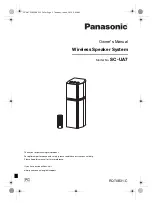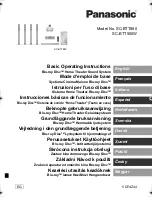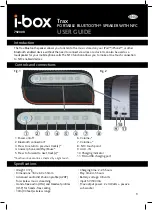
4
C
onneCtion
WARNING!
Turn your amplifier
off before making or breaking any
signal connections!
Use the best speaker cables you can. The length
and type of speaker cable used in your system will
have an audible effect. Under no circumstance
should a wire of gauge higher (thinner) than #16
be used. In general, the longer the length used,
the greater the necessity of a lower gauge, and
the lower the gauge, the better the sound, with
diminishing returns setting in around #8 to #12.
A variety of cables are available whose manufactur-
ers claim better performance than standard heavy
gauge wire. We have verified this in many cases,
and the improvements available are often more
noticeable than the differences between wires of dif-
ferent gauge. The effects of cables may be masked
if equipment is not of the highest quality.
Connections are done at the signal input section
on the rear electronics panel of the speaker. Use
spade connectors for optimum contact and ease
of installation. Hand tighten the binding posts, but
do not overtighten—do not use a tool to tighten the
binding posts.
Be consistent when connecting the speaker cables
to the signal input terminals. Take care to assign
the same color cable lead to the (+) terminal on
both the left and right channel speakers. If bass is
nonexistent and you cannot discern a tight, coher-
ent image, you may need to reverse the (+) and
(–) leads on one speaker to bring the system into
proper polarity.
JUMPER CLIPS
In some countries federal law prohibits
MartinLogan from supplying jumper clips. If none
are found installed under your speakers binding
posts, please refer to ‘Bi-Wire Connection’ for con-
nection instructions.
Fig. 1:
Single-wire connection. One channel shown.
Fig. 2:
Bi-wire connection. One channel shown.
Summary of Contents for 35XT
Page 1: ...u s e r s m a n u a l ...
Page 3: ...3 x2 x4 ...
Page 11: ...g u i d e d e l u t i l i s a t e u r ...
Page 13: ...13 x2 x4 ...





































